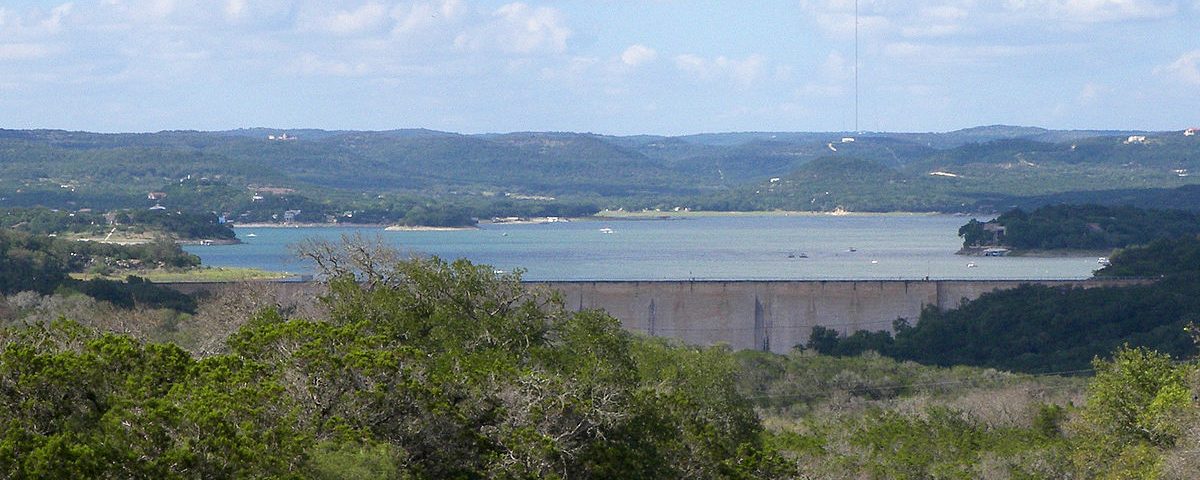Medina Valley Times Article – August 2, 2018 Castroville, Texas

Kenric Ward
Contributing Writer
Is Medina Lake half empty or half full? Are water levels steady or falling?
A long-running skirmish over these questions resurfaced recently when a conservation group accused the Bexar Medina Atascosa (BMA) Water Control and Improvement District of mismanaging the lake reservoir.
“This lake is dropping fast,” declares Henning Eilert-Olsen, president of Save Medina Lake (SML). “What we don’t know is how much is due to natural leakage, evaporation or [open] gates.”
The Texas Water Development Board rates Medina Lake as 49 percent full. With a capacity of 254,823 acre-feet, its current conservation storage is 125,265 acre-feet.
The U.S. Geological Survey (USGS) listed the official water level elevation at 1,038.14 feet on July 25. The lake began the month at 1,040.12 – meaning a drop of 1.98 feet across the surface of the 18-mile-long lake during that span.
Since August 2017, reservoir storage at Medina has dropped precipitously – from 205,000 acre-feet to under 130,000 acre-feet, according to USGS.
“Due to the current drought, natural leakage and one of the valves in the Medina Lake dam being open, the lake is losing approximately 500 acre-feet per day,” Eilert- Olsen contends.
An important recharger for the giant Edwards Aquifer and a recreational gem for the region, Medina Lake’s water levels are closely watched by conservation groups. Over the years, SML has filed numerous public records request seeking information on district policies and operations.
BMA office manager Bonnie Tapp reported that 119.01 acre-feet are discharged daily through irrigation canals. She said the Natalia-based district has permits to release 46,026 acre-feet for irrigation annually. “
BMA wants a full reservoir just as much as any waterfront owner or business,” Tapp said. “We strive to improve efficiency, keeping water conservation a priority all while ensuring farmers have the water they need when they need it.”
SML counters that irrigated acreage in the district has been in steady decline. The group says water sales in 2017 covered less than 10,000 acres, roughly one-third what the BMA water permit allows.
As part of its reservoir and irrigation improvement program, BMA has installed more than 33,420 feet of piping so far this year. An additional 16,065 feet are scheduled to be in place by year-end.
While they may not see eye to eye on much, BMA and SML agree that pipes are far more efficient than exposed canals, which lose water to evaporation.
From 2002-2017, the water district said it spent $17,136,122 on capital improvements in and around the lake.
As for those “dam valves,” Tapp said the Medina Lake gates were closed from Aug. 7, 2017, to May 29, 2018. During that time, water storage capacity dropped 54,100 acre-feet.
“That is an average of about 183 acre-feet per day while Medina valves were closed,” Tapp noted.
SML suspects that open valves are exacerbating the lake’s water loss.
“The main problem with BMA is that they do not measure the water released from Medina Lake. They only measure what is released from [the smaller] Diversion Lake into the irrigation canals, which of course is meaningless as long as the gates in Medina Dam remain open,” Eilert-Olsen wrote in an e-mail.
Tapp responded with a detailed explanation:
“The Medina Reservoir is part of our irrigation reservoir system. This system transports irrigation water to a release point where the water is measured as it goes into the canal system. This measurement is then reported to the Texas Commission on Environmental Quality (TCEQ) and is the only required measurement that BMA must report. We follow TCEQ regulations on measuring and reporting all water taken and used under our permit for allotted water.”
Tapp went on to say: ”It is unfortunate that SML is unable to grasp this two-reservoir system with proper metering of the legal use of water under our permit. SML has been supplied this information in an open records request.”
Tapp suggested that BMA’s critics look northward.
“It is our hope that SML would be concerned about the damming of tributaries in the recharge basin, and the effects this has on the inflow into the Medina Reservoir. SML has been myopic and refuses to look into the Medina River Watershed and the damming of the relatively small recharge basin of 634 square miles,” Tapp said.
Eilert-Olsen credits the current BMA board with being more responsive in recent months, but his group isn’t convinced that people are getting the full story about conditions at the lake.
“We urge the public to contact their local and state representatives to make sure BMA is forced to have policies in place to prevent draining Medina Lake,” SML said in a statement last month.
Tapp encourages residents to check the agency’s website – bmawater.org — for updates on projects, status of the canal system and general information.
